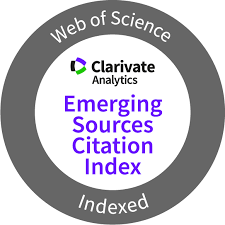Research platform for the virtual confinement of bovines
DOI:
https://doi.org/10.36561/ING.20.2Keywords:
Animal confinement, Cattle tracking, Animal welfareAbstract
Prior work in virtual fences has proposed different schemes to keep cattle confined within a remotely configured perimeter. These techniques share a common pattern that consists of placing an electronic device in the animal capable of applying stimuli when it approaches the pre-established limits. The use of electric shocks as a method of stimulation is widely used. This work proposes a solution compatible with animal welfare, which avoids electric shocks, based only on sound and tactile stimuli (using a vibrating motor). For this, a system was developed consisting of an electronic device that is placed on the animal's neck, and has the capacity to stimulate and send information wirelessly; a central server that is able to receive, process and store that information; and a graphical user interface, where the animal's position can be visualized and several parameters can be configured to evaluate different virtual confinement techniques. The tests performed on animals suggest that the stimuli used is aversive, so it is estimated that they could achieve their goal after a period of training. The research on the effectiveness of the proposed confinement techniques using our platform should be carried out in a next stage by an interdisciplinary team.
Downloads
References
C. Umstatter, “Review: The evolution of virtual fences: A review,” Comput. Electron. Agric., vol. 75, no. 1, pp. 10–22, Jan. 2011.
R. E. Marsh, “Fenceless animal control system using GPS location information,” Feb. 9 1999, US Patent 5,868,100.
A. Llaria, G. Terrasson, H. Arregui, and A. Hacala, “Geolocation and monitoring platform for extensive farming in mountain pastures,” in IEEE Intl. Conf. on Industrial Technology (ICIT), Mar 2015, pp. 2420– 2425.
S. J. Giunta, “Wireless fencing system,” Dec. 28 2010, US Patent 7,856,947.
Z. Butler, P. Corke, R. Peterson, and D. Rus, “Virtual fences for controlling cows,” in IEEE Intl. Conf. on Robotics and Automation, vol. 2004, no. 5, 2004, pp. 4429–4436.
——, “From robots to animals: Virtual fences for controlling cattle,” Intl. Journal of Robotics Research, vol. 25, no. 5-6, pp. 485–508, 2006.
G. Bishop-Hurley, D. Swain, D. Anderson, P. Sikka, C. Crossman, and P. Corke, “Virtual fencing applications: Implementing and testing an automated cattle control system,” Comput. Electron. Agric., vol. 56, no. 1, pp. 14–22, 2007.
D. Campbell, J. Lea, W. Farrer, S. Haynes, and C. Lee, “Tech-savvy beef cattle? how heifers respond to moving virtual fence lines,” Animals, vol. 7, no. 9, 2017.
D. Campbell, J. Lea, S. Haynes, W. Farrer, C. Leigh-Lancaster, and C. Lee, “Virtual fencing of cattle using an automated collar in a feed attractant trial,” App. Animal Behaviour Sc., vol. 200, pp. 71–77, 2018.
I. Ferrer, “Holanda prohíbe el uso de collares electricos para perros (in spanish),” Diaro El País, 6/4/2019, disponible en línea, consultado 23/2/2021. https://elpais.com/elpais/2019/04/06/mundo_animal/1554560388_687751.html,
N. Acosta, N. Barreto, P. Caitano, R. Marichal, M. Pedemonte, J. Oreggioni, “Research platform for cattle virtual fences”, IEEE International Conference on Industrial Technology (ICIT), pags. 797-802, Buenos Aires, Argentina, 26-28 Feb, 2020.
N. Acosta, N. Barreto, P. Caitano, “Plataforma de geolocalización e investigación en confinamiento virtual de bovinos”, tesis de grado, IIE, Facultad de Ingeniería, Universidad de la República (Uruguay), 2019.
Catel, “Cercas virtuales: hacia un futuro sin límites”, disponible en línea, consultado 23/2/2021, http://catel.uy,
IBM, LoRaWAN in C (LMiC) Technical Specification v 1.5, Mayo 2015.
M. Kooijman, “Arduino-lmic library”, 2017, disponible en línea, consultado 23/2/2021, https://github.com/matthijskooijman/arduino-lmic
S. D. Roth, “Ray casting for modeling solids,” Computer Graphics and Image Processing, Volume 18, Issue 2, Pages 109-144, 1982.
Published
How to Cite
Issue
Section
License
Copyright (c) 2021 Néstor Acosta, Nicolás Barreto, Pablo Caitano, Raúl Marichal, Martín Pedemonte, Julián Oreggioni

This work is licensed under a Creative Commons Attribution 4.0 International License.






















